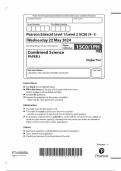Samenvatting
Complete summary of Intro. to Research in Marketing, including tutorials
- Vak
- Instelling
A complete summary, including an overview of the relevant output in R. This course is part of the MSCs Marketing management and marketing analytics at Tilburg University.
[Meer zien]












